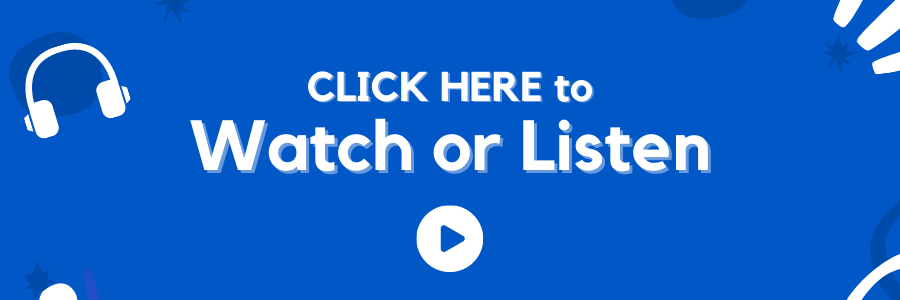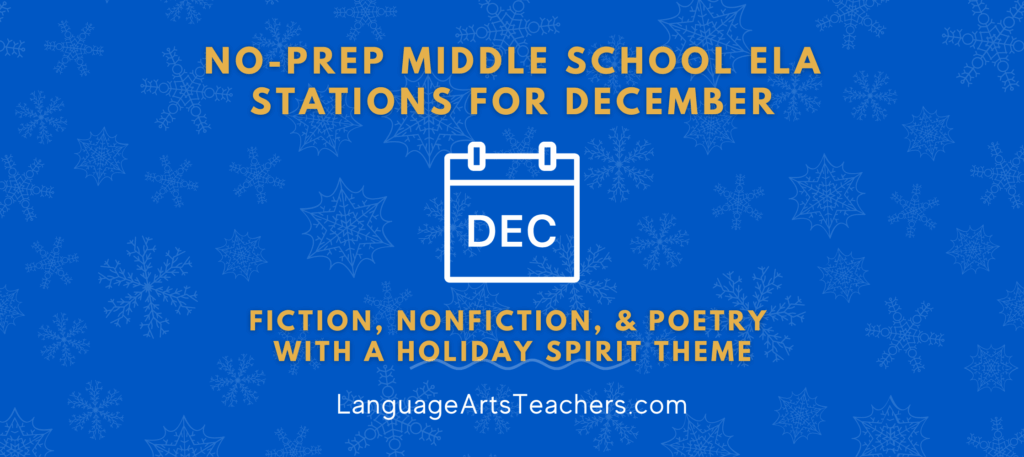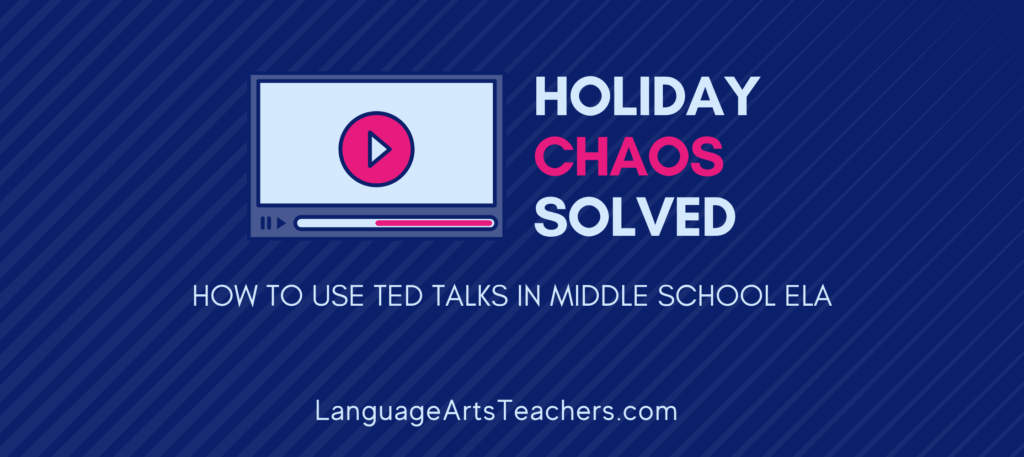You know you need (and want!) to engage your middle school ELA/R students grammar instruction, but you’re stuck at:
>> How to teach grammar consistently (there’s just no time!)
>> Whether to teach grammar in isolation or not (forget religion and politics—this is what really divides people!)
>> What to do (or not do) to help students actually retain the concepts
>> How to get students to apply what they’ve learned in real life (otherwise, what’s the point?)
To answer ^ those questions and to get you on the right track, I’m sharing my top 3 simple strategies to use right now for grammar instruction you and your students will love.
These action steps are tried and true, and I rely on them for consistent, no-prep grammar review and practice:
Simple Strategy #1: Flip your grammar instruction.
This means no more teaching a 20 minute mini-lesson about commas and then giving your students a worksheet that they may or may not even do.
It means no more time wasted where your students seem to know the concept but then can’t use a comma in their own writing.
What it DOES mean is that you allow 5 – 10 minutes right at the very beginning of class each day (or at least every Tuesday and Thursday, or every Monday, Wednesday, Friday) for the review and practice of grammar concepts . . .
(Concepts that YOU don’t have to plan for or teach yourself).
And this isn’t about random YouTube videos or old worksheets from the teacher who used the classroom before I got there.
My absolute #1 go-to for no-prep, student-friendly grammar instruction is the digital, user-friendly GrammarFlip platform.
→ Free 30 day trial for all your students (and if you choose to purchase, it’s VERY reasonable and super realistic even if you teach 150+ students).
It’s a huuuuuuge life-saver. Seriously.
Flipping your grammar instruction means students are working through the very brief “nuggets” of lessons on their own while you can take care of your other teacher responsibilities (like working with a small group for intervention, or conferring with an upset student, or taking attendance and grabbing a few sips of water at the beginning of class).
GrammarFlip records students’ progress, and the data is super easy to look at because it’s simple to use and it’s visually appealing.
The system grades for you, processes the data for you, and provides the next set of digital lessons each student needs to work through based on that data.
See how it’s all flipped?
I’m a fan of GrammarFlip for my grammatical instruction needs because it literally flips on its head what we thought teaching grammar had to be like before.
Simple Strategy #2: The use of flexible time.
Grammar instruction doesn’t have to happen at the exact same time for all students.
That may sound like a chaotic mess waiting to happen, but hear me out.
We already struggle with the amount of reading, writing, vocabulary, research, speaking, listening, presentations, etc. that happen in a middle school ELA/R classroom.
Grammar often gets pushed to the side (not because we don’t care, but because we just can’t seem to get everything done).
The solution is to think about “flexible time” in our classrooms and to USE that flex time to our advantage . . . Not that WE have flex time, but often, our students do!
We have students who:
>> seem to finish everything way too fast and need something consistent to work on.
>> are disengaged with many lessons, and need options to refocus
>> become easily overwhelmed at the pace of our class and wish they could learn on their own terms
>> need variety in what they’re learning and can’t seem to focus very long on any one thing
This is where using “flex time” in the classroom with GrammarFlip is my favorite long-term solution.
When students claim to be “done” with their work, or when they say they need a break from the reading, or when they have “writer’s block” and can’t get past the first paragraph of an essay, or when they’re between choice reading selections and aren’t ready for another book just yet . . .
Work on your GrammarFlip lessons.
The lessons themselves are short—often 3 – 5 minutes long with a bit of practical, real-life application built right in. It’s the perfect solution to all the little buckets of time students seem to have throughout the class period that can quickly turn into long periods of wasted time.
When students know that GrammarFlip is always there for them, and that the lessons are super short yet highly impactful, it’s easy for them to feel successful.
Even just a 4 minute GrammarFlip lesson helps build momentum so students want to keep going—either they’ll continue moving through GrammarFlip until we as a class are ready to move on, or they’ll feel a sense of success to where they’re ready to get back to the other tasks they’re working on for the day.
GrammarFlip literally sets students up to win because it’s not complicated, it’s not labor-intensive, and it tracks their progress so they can also see their growth over time.
Simple Strategy #3: Accessible from anywhere, anytime.
If you have Google Classroom, then you simply click a button (“a” button as in ONE button!) to upload your classes automatically.
If you don’t have Google Classroom, then you’ll get a code instead, and your students on their side of things just enter the code (you’re not manually having to type in tons of names).
The point here is that once students are in the GrammarFlip platform, they can access their portals from anywhere that has a wifi connection.
This means that yes, they can work on GrammarFlip right there inside your classroom (so perfect for “flex time” as I shared a second ago). But this also means that students can work through GrammarFlip lessons anywhere outside of class, too.
Here are a few of my favorite ways to take advantage of GrammarFlip beyond the classroom:
>> If you have parents who are asking about “extra” practice their students can do at home, you’re set! No need to create anything else beyond what you’re already doing.
>> If a student has some kind of after school detention (does your school have that?) and they need work to do, GrammarFlip is there! It’s not a punishment at all. It’s simply a resource that students can always work with that doesn’t require YOU to scramble at the last minute trying to get something together to send to them. For me, when I get a message from the office saying a student of mine has been assigned to detention after school and that I need to provide work, my response is GrammarFlip and the choice reading novel they have. There’s nothing “extra” I have to create or prepare for them. It’s work they’re already used to doing so it truly is natural, authentic work they would be doing in class anyway.
>> If a student is absent and needs makeup work, GrammarFlip is a fantastic go-to because they will continue working through the lessons as if they had been in class. Again, it’s a resource we use on a regular basis, so it’s nothing new they have to figure out on their own.
Finally, if you’re working in a school where you have multiple grade levels in a single classroom, then GrammarFlip is an absolute must-have to help your classroom run smoothly.
You may have multiple grade levels if you’re in a:
>> small rural school or small charter school
>> private school with mixed grades/abilities/subjects at once
>> public school elective like creative writing or other extracurricular class
In those cases, GrammarFlip is essential to your own sanity as a teacher because students will work through the lessons all year at their own pace. They’ll start and finish lessons based on the built-in (and short!) diagnostic assessment so they don’t have to spend time learning concepts that they don’t need to learn (or that they aren’t ready to learn).
It’s differentiated instruction with no prep (or grading) on your part!
If you’d like a behind-the-scenes over-the-shoulder tour of GrammarFlip, then click the button below to meet the teacher who designed it:
Next Steps:
>> Grab your 100% free, all-access GrammarFlip trial
>> Take 5 – 10 minutes each class to flip your grammar instruction





